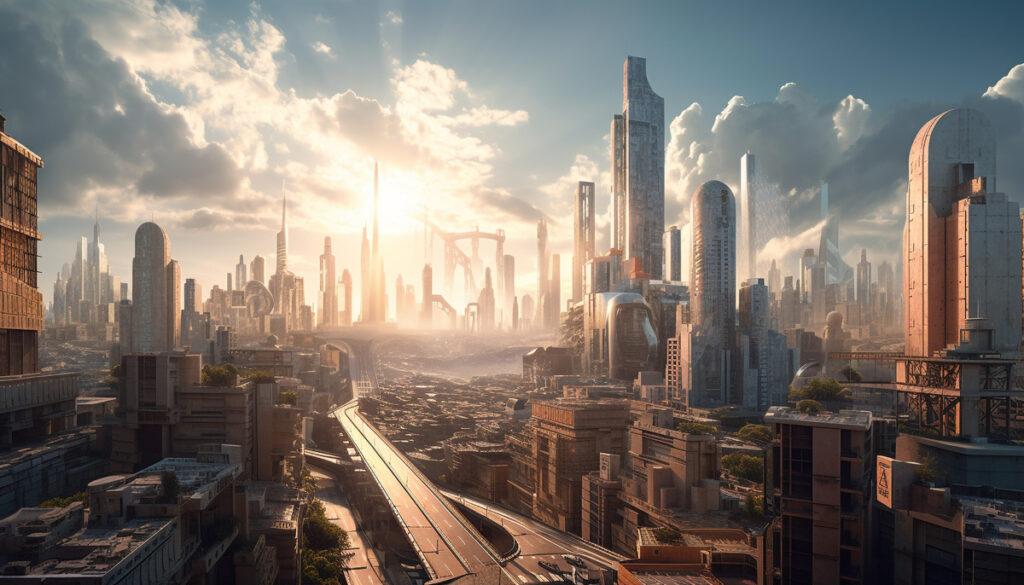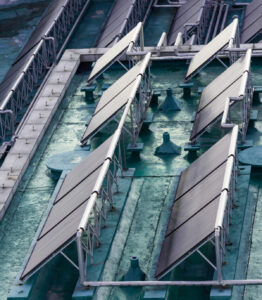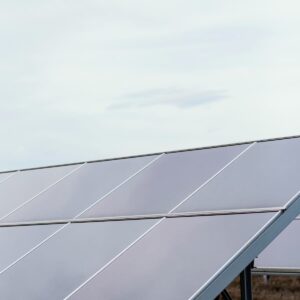Updated by Nazanin Ghodsian, 09/17/2024
The construction industry is about to experience an important transformation as cutting-edge technologies and conventional building techniques combine to redefine how we construct the buildings of the future. As per the World Economic Forum, construction is one of the major drivers of global economies, contributing approximately 13% of the global GDP. However, the sector continues to face issues like a lack of workers, overspending, and negative environmental effects, all of which necessitate creative solutions.
The solution appears to be futuristic construction, which integrates state-of-the-art technology like 3D printing, robotics, and building information modeling (BIM) to lower costs and increase efficiency. The use of BIM alone has been demonstrated to reduce project rework by 30%, which is a real advantage for construction management. The increasing adoption of digital tools and automation has the potential to transform project schedules, safety procedures, and material utilization.
Sustainable construction is at the core of futuristic construction. The building industry is accountable for around 40% of worldwide carbon emissions; thus, it is imperative to embrace green and reusable materials in construction and renewable energy sources. The trend toward more sustainable buildings is being driven by the usage of carbon-neutral materials and green building practices. According to studies, these actions might result in a 20% reduction in emissions.
The future of construction isn’t just about developing buildings; it’s about designing smarter, more resilient construction, and more sustainable spaces. The industry is adapting to this change by rethinking how we design spaces and how people use them. The goal of this new age of futuristic construction is to transform the way we design a world that is efficient, sustainable, and responsive to changing requirements, rather than just focusing on technology.
Table of Contents
Current Landscape of Construction
The current landscape of construction is a blend of traditional methods intertwined with modern technology and evolving practices. Here’s an overview:
Traditional Methods
Traditional construction methods have stood as the bedrock of the industry for centuries, anchoring practices such as bricklaying, concrete pouring, timber framing, and steel erection. These time-honored techniques persist due to their reliability and effectiveness. Craftsmanship, expert knowledge, and skilled labor define these methods, carrying forward a legacy of tried-and-tested approaches.
Despite advancements in technology and newer methodologies, the enduring significance of these traditional techniques persists, rooted in their ability to deliver sturdy, durable structures. They not only reflect the industry’s historical continuity but also embody a tangible connection to the past, acknowledging the profound impact of expertise and craftsmanship on the construction landscape.
Technology Integration
In recent years, the construction industry has witnessed a significant integration of futuristic construction technologies aimed at optimizing operations and productivity. Among these advancements, Building Information Modeling (BIM) stands out as a transformative tool. BIM facilitates a comprehensive approach, enabling architects, engineers, and construction teams to collaborate seamlessly through its 3D modeling capabilities.
This technology revolutionizes project planning by enhancing visualization, detecting clashes, and streamlining coordination. Its real-time data sharing and visualization features not only improve decision-making but also minimize errors and rework. BIM’s adoption signifies a shift towards more efficient and synchronized construction practices, fostering better project outcomes and resource utilization within the industry.
Challenges Faced
Despite technological advancements, the industry grapples with several challenges:
- Labor Shortage: Skilled labor scarcity poses a significant hurdle, impacting project timelines and costs in implementing futuristic construction.
- Cost Overruns: Construction projects often face budget overruns due to unforeseen circumstances, design changes, or material price fluctuations in implementing futuristic construction.
- Sustainability: Balancing the need for rapid construction with environmental sustainability remains a challenge in futuristic construction.
Regulatory Framework
The construction sector operates within a framework of stringent regulations and compliance standards aimed at ensuring not only safety but also quality and environmental adherence. These regulations encompass an array of measures, including building codes dictating structural integrity, zoning laws guiding land use, and safety protocols ensuring worker well-being in futuristic construction.
They serve as pivotal guidelines shaping construction practices, emphasizing everything from materials used to construction techniques employed in futuristic construction. Environmental norms further influence these standards, pushing for sustainable and eco-friendly approaches. Adhering to these regulatory frameworks is fundamental, safeguarding not just the structural soundness of buildings but also the overall safety of communities while minimizing environmental impact. They form the backbone of responsible and ethical construction practices in today’s world.
Industry Trends
Several trends are reshaping the construction landscape, paving the way for futuristic construction:
- Prefab and Modular Construction: Off-site construction of modules or components, enhancing efficiency and reducing on-site labor requirements while accelerating project timelines.
- Digitalization and IoT: Integration of IoT devices and sensors on construction sites for real-time monitoring, data collection, and predictive analytics, revolutionizing project management and efficiency.
- Sustainable Practices: Embracing eco-friendly materials and green building certifications to minimize environmental impact, ensuring that future construction aligns with sustainable development goals.
Future Outlook
The construction industry teeters on the brink of a transformative era, driven by technological leaps like AI, robotics, 3D printing, and eco-conscious materials. This wave of innovation promises heightened efficiency, cost-effectiveness, and eco-friendliness, marking a pivotal shift.
Embracing these advancements signals a move towards futuristic construction practices, ushering in an unprecedented era of innovation and sustainability. This imminent transformation invites a reimagining of traditional processes, paving the way for groundbreaking methodologies in a construction landscape poised for innovation and sustainability.
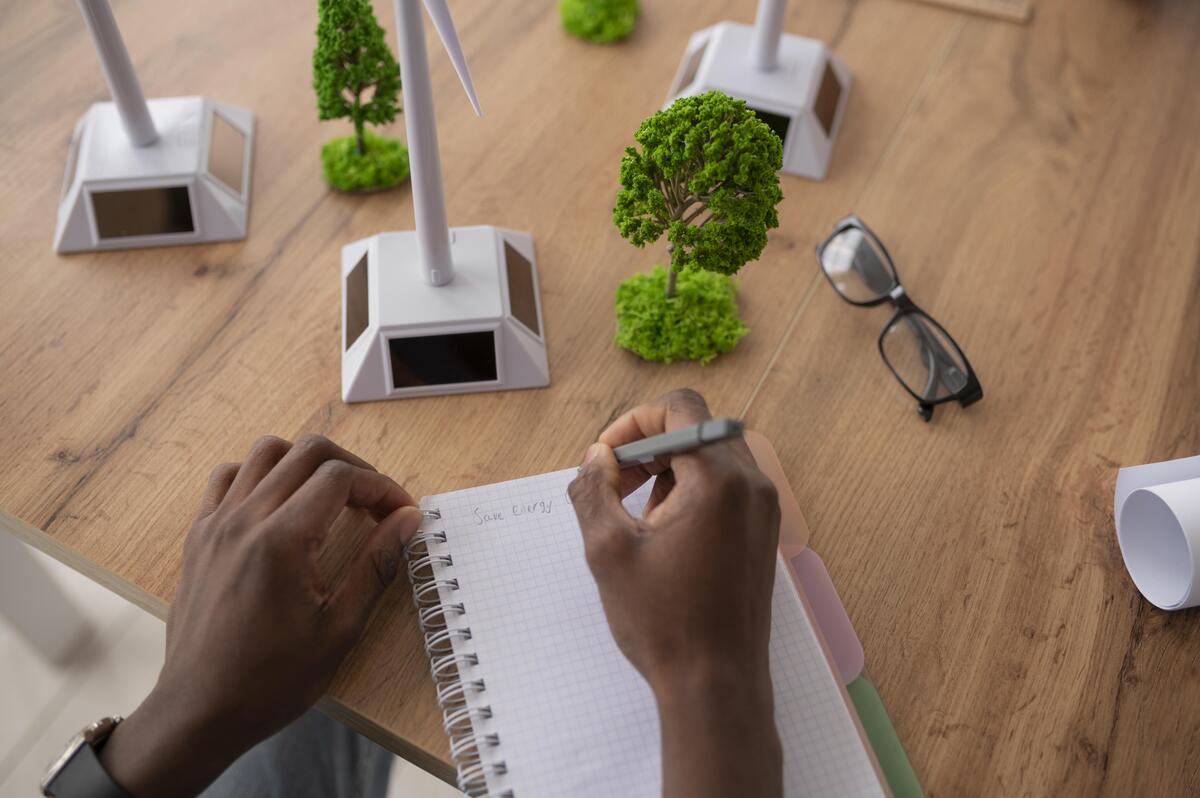
Emerging Technologies in Construction
The construction industry is undergoing a transformative phase propelled by innovative technologies. Among the most prominent is Building Information Modeling (BIM), which revolutionizes design and planning by creating detailed 3D models, enhancing collaboration among stakeholders. Additive manufacturing, like 3D printing, allows for the cost-effective and rapid construction of complex structures.
Drones are optimizing site surveys, monitoring progress, and enhancing safety protocols. Augmented Reality in construction and Virtual Reality (VR) offer immersive experiences for design visualization and training. Furthermore, robotics and automation streamline tasks, increasing efficiency and safety on-site. Finally, the Internet of Things (IoT) integrates smart sensors into buildings, enabling real-time monitoring for maintenance and energy efficiency. These technologies collectively redefine construction methodologies, enhancing precision, sustainability, and safety in building processes.
Advanced Materials
- Self-healing Concrete: This innovative material possesses autonomous crack repair capabilities, significantly enhancing durability and extending the longevity of structures.
- Nanotechnology: By manipulating materials at a molecular or atomic level, this technology boosts strength, flexibility, and various other crucial properties in construction materials.
- Bio-based Materials: Derived from renewable resources, these sustainable alternatives significantly reduce environmental impact and offer eco-friendly solutions in construction.
Suggested article to read: 11 Innovative Construction Materials; 2024 Review
Robotics and Automation
- Drones in Construction: These aerial marvels are utilized extensively for surveying, mapping, and monitoring construction sites. Their applications vastly improve safety measures and enhance overall operational efficiency.
- Robotic Construction Equipment: Autonomous machinery designed for tasks such as bricklaying, excavation, and demolition is revolutionizing traditional methods. By minimizing labor requirements and maximizing precision, these technologies optimize construction processes.
- Exoskeletons: Wearable robotic devices represent a groundbreaking innovation, aiding workers in lifting heavy objects and minimizing physical strain. These exoskeletons significantly contribute to ensuring worker safety and augmenting human capabilities on-site.
Suggested article to read: Construction Robots in 2024: A Comprehensive Guide
3D Printing
- Futuristic Construction 3D Printing: This innovative method involves printing large-scale structures using concrete or other materials, offering rapid construction and enhanced design flexibility.
- Prefabrication in Construction: Off-site 3D printing of building components accelerates assembly on-site, revolutionizing construction speed and efficiency.
Suggested article to read: 3D Printing in Construction: 6 Examples and Case Studies
Sustainability and Green Construction
- Green Building Materials: Innovations in eco-friendly materials like recycled steel, bamboo, and reclaimed wood contribute to futuristic construction practices, emphasizing sustainability in building materials.
- Energy-Efficient Design: Integration of design strategies to optimize energy consumption and minimize environmental impact signifies a forward-thinking approach in futuristic construction methods.
- Waste Reduction Technologies: Implementation of recycling and waste management solutions minimizes construction waste, aligning with the futuristic construction ethos of sustainability and resource efficiency.
Suggested article to read: Sustainable Construction Technology; Ultimate Guide in 2024
Digital Transformation
- Building Information Modeling (BIM): Detailed 3D models for collaborative design, planning, and project management, shaping the future of futuristic construction methodologies.
- Internet of Things (IoT): Sensors and connected devices on construction sites for real-time data collection, enhancing safety and efficiency in futuristic construction.
- Augmented Reality (AR) and Virtual Reality in Construction: Visualization tools empowering design review, training, and project presentation in the realm of futuristic construction practices.
Suggested article to read: Digital Transformation Framework for 2024
Future Prospects
The integration of these technologies heralds a revolutionary shift in construction practices, envisioning futuristic advancements:
- AI and Machine Learning: Elevating predictive analytics to optimize project planning, risk assessment, and resource allocation.
- Blockchain in Construction: Streamlining contract management, supply chain transparency, and secure payment processes.
- Biophilic Architecture: Embracing natural elements in construction for enhanced well-being and sustainable practices.
These innovations drive progress, promising accelerated construction timelines, heightened safety standards, minimized environmental footprints, and expanded design horizons. Together, they sculpt the future landscape of the construction industry in profound and visionary ways.
Sustainability and Green Construction
Sustainability and green construction have become pivotal focuses within the construction industry, aiming to reduce environmental impact, enhance energy efficiency, and promote eco-friendly practices throughout the building lifecycle. Futuristic construction methods and innovative technologies play a vital role in achieving these goals.
Key Aspects of Sustainability in Construction
Key aspects of sustainability in futuristic construction are listed below:
Eco-Friendly Materials
- Recycled and Reclaimed Materials: Incorporating recycled steel, reclaimed wood, and repurposed materials into construction processes reduces reliance on new resources and promotes sustainability in building practices.
- Bio-based Materials: Integrating renewable resources such as bamboo, straw, and mycelium-based materials fosters eco-friendly construction, aligning with futuristic construction approaches focused on sustainable material choices.
Recycled and reclaimed materials form a cornerstone of sustainable construction practices, diminishing reliance on new resources. The incorporation of recycled steel or repurposed wood significantly reduces waste and environmental strain while infusing structures with a distinctive character. Bio-based materials, including bamboo, straw, and mycelium-based resources, diversify material sources and align with sustainability objectives.
These renewable alternatives showcase the potential for crafting durable and inventive construction elements while mitigating the ecological footprint inherent in conventional materials. Futuristic construction emphasizes the integration of such innovative materials for sustainable and forward-thinking building practices.
Energy Efficiency
- Passive Design Strategies: Implementing forward-thinking techniques such as optimizing building orientation, insulation, and natural lighting to reduce dependence on artificial heating and cooling.
- High-Efficiency Systems: Incorporating cutting-edge energy-efficient HVAC, lighting, and appliances to significantly minimize overall energy consumption. These strategies align with the futuristic construction paradigm, prioritizing sustainability and energy optimization.
Passive Design Strategies capitalize on natural elements, meticulously considering building orientation, insulation, and harnessing natural light. By aligning structures to maximize sunlight exposure and airflow while using superior insulation, these strategies reduce the need for artificial heating and cooling systems. This approach not only slashes energy bills but also minimizes the building’s carbon footprint, promoting sustainable construction practices and embracing futuristic construction methodologies.
High-Efficiency Systems represent the forefront of energy-conscious construction, integrating cutting-edge technology into HVAC, lighting, and appliance systems. These systems are engineered to operate optimally while consuming minimal energy, contributing significantly to reduced energy bills and overall environmental impact. By selecting and installing these advanced systems, buildings can substantially enhance their energy efficiency, ensuring a greener and more sustainable future while embracing futuristic construction approaches.
Waste Reduction and Management
- Construction Waste Minimization: Implementing practices to reduce, reuse, and recycle construction waste.
- Circular Economy Principles: Embracing principles that promote the reuse of materials and components to minimize waste generation.
Construction Waste Minimization involves proactive strategies aimed at curbing waste generation within construction projects. By implementing efficient practices that emphasize reduction, reuse, and recycling of materials, the industry significantly mitigates its environmental impact. This approach not only minimizes the volume of waste sent to landfills but also conserves resources by maximizing the utility of materials throughout the construction lifecycle.
Circular Economy Principles are fundamental in reshaping the construction industry towards sustainability. Embracing these principles involves a shift from a linear “take-make-dispose” model to one that prioritizes the continual reuse and repurposing of materials and components. By fostering a closed-loop system where resources are recycled, regenerated, or repurposed, construction endeavors reduce waste generation, fostering a more sustainable and resource-efficient approach to building and development.
Green Building Certifications and Standards
- LEED (Leadership in Energy and Environmental Design): Certification system recognizing sustainable building strategies and practices.
- BREEAM (Building Research Establishment Environmental Assessment Method): Similar to LEED, evaluating the environmental performance of buildings.
LEED (Leadership in Energy and Environmental Design) stands as a benchmark certification system acknowledging and endorsing sustainable building strategies and practices. It assesses a building’s environmental impact, focusing on energy efficiency, water savings, materials usage, and indoor environmental quality. Achieving LEED certification signifies a commitment to reducing a structure’s carbon footprint and promoting a healthier environment.
BREEAM (Building Research Establishment Environmental Assessment Method) operates similarly to LEED, offering an evaluation framework for determining the environmental performance of buildings. It considers various aspects such as energy efficiency, materials selection, waste management, and ecological impact. BREEAM certification emphasizes sustainable design and construction practices, providing recognition for structures that prioritize environmental responsibility and resource efficiency.
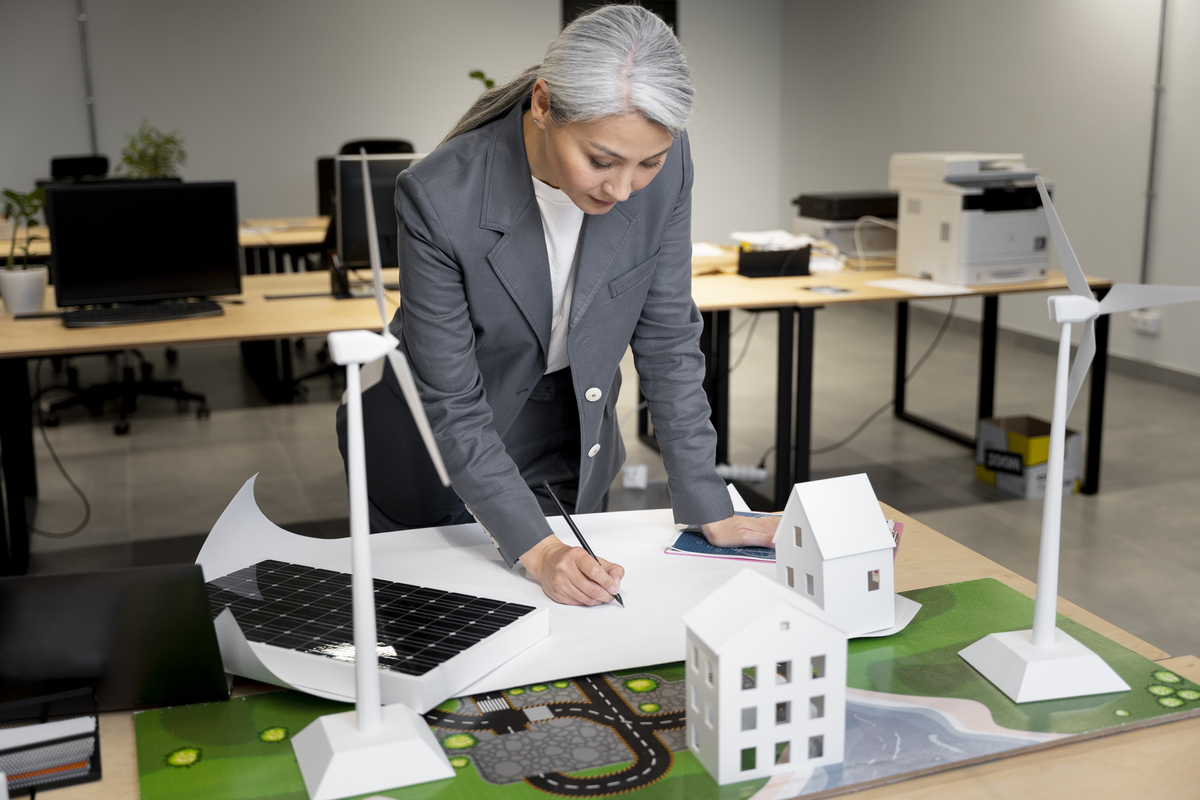
Sustainable Construction Practices
Green Roofs and Walls
- Green Roof Systems: Planting vegetation on rooftops to reduce heat absorption, improve air quality, and provide insulation.
- Living Walls: Vertical gardens or plant-covered walls for aesthetic appeal and environmental benefits.
These innovative systems involve planting vegetation atop rooftops, offering a plethora of environmental advantages. They act as natural insulators, reducing heat absorption and energy costs while mitigating urban heat island effects. Moreover, they enhance air quality by absorbing pollutants and CO2, contributing to a healthier environment. Green roofs also provide habitats for wildlife and contribute to stormwater management by absorbing rainwater and lessening runoff.
Vertical gardens or plant-covered walls not only add aesthetic charm but also offer numerous environmental benefits. These lush walls act as natural air purifiers, improving air quality by filtering pollutants and releasing oxygen. They contribute to temperature regulation by providing insulation and reducing the heat island effect in urban areas. Additionally, living walls promote biodiversity, creating habitats for insects and small creatures, and enhancing urban ecosystems in a visually appealing manner.
Renewable Energy Integration
- Solar Panels: Installing photovoltaic panels to generate clean and renewable energy.
- Wind Turbines: Harnessing wind energy to supplement a building’s power needs.
Solar panels offer a sustainable solution by converting sunlight into electricity, reducing reliance on traditional power sources. By installing photovoltaic panels, buildings generate clean and renewable energy, significantly cutting carbon footprints and contributing to a more eco-friendly energy landscape.
Wind turbines serve as efficient generators, utilizing wind power to supplement a building’s energy requirements. Harnessing this renewable energy source complements traditional power systems, offering an environmentally friendly way to diversify and bolster a building’s energy supply. Incorporating wind turbines promotes sustainability while embracing innovative, clean energy practices.
Water Conservation
- Low-Flow Fixtures: Installing water-saving fixtures like low-flow toilets and faucets to minimize water usage.
- Rainwater Harvesting: Collecting rainwater for irrigation and non-potable uses.
Integrating water-saving fixtures, such as low-flow toilets and faucets, serves as a pivotal step in conserving water within buildings. These fixtures regulate water flow, significantly reducing consumption without compromising functionality. Their installation not only curtails water wastage but also contributes to cost savings and environmental preservation, aligning with sustainable building practices.
Embracing rainwater harvesting involves collecting and storing rainwater for various non-potable purposes, such as landscape irrigation or flushing toilets. This sustainable practice not only reduces dependency on traditional water sources but also mitigates stormwater runoff, lessening the burden on drainage systems. By harnessing nature’s bounty, rainwater harvesting supports eco-friendly initiatives and bolsters water conservation efforts in construction and beyond.
Advantages of Green Construction
- Environmental Benefits: Reducing carbon footprint, preserving natural resources, and minimizing pollution.
- Economic Savings: Lower operating costs through energy savings and reduced waste.
- Improved Health and Well-being: Enhancing indoor air quality and occupant comfort.
Future Trends and Innovations
- Net-Zero Buildings: Structures designed to produce as much energy as they consume.
- Biophilic Design: Integrating natural elements into buildings to improve occupant well-being.
- Smart Sustainable Cities: Entire urban areas designed with sustainability and eco-friendly practices in mind.
Sustainability and green construction practices continue to evolve, driven by technological advancements, regulatory changes, and a growing emphasis on environmental responsibility. Embracing these practices not only benefits the environment but also contributes to more efficient and healthier built environments for future generations.
Digital Transformation in Construction
Digital transformation in futuristic construction involves the integration of technology to modernize processes, enhance efficiency, and improve collaboration throughout the construction lifecycle. Here’s an overview of its key aspects:
Building Information Modeling (BIM)
- 3D Modeling: Creating digital representations of buildings and infrastructures for planning, design, and visualization.
- Collaborative Platform: Allowing multiple stakeholders—architects, engineers, contractors—to work on a unified platform, fostering better communication and coordination.
- Clash Detection: Identifying and resolving design conflicts before futusristic construction, reducing errors and reworking on-site.
3D Modeling transforms architectural visions into intricate digital blueprints, enabling comprehensive planning, design, and vivid visualizations of buildings and infrastructure. It revolutionizes how concepts are conveyed and refined, offering a detailed preview before the ground is broken.
Collaborative Platforms serve as the nexus where diverse experts converge. Architects, engineers, and contractors collaborate seamlessly, leveraging a unified digital space. This fosters unparalleled communication and coordination, streamlining workflows and enhancing project efficiency.
Clash Detection emerges as a preemptive shield against construction setbacks. Identifying and resolving conflicts within designs before they materialize on-site, curtails errors and the need for costly rework. This proactive approach ensures smoother construction processes, saving both time and resources.
Internet of Things (IoT) and Sensors
- Connected Devices: Sensors embedded in equipment, materials, and structures for real-time monitoring of temperature, humidity, structural integrity, etc.
- Data Collection and Analysis: Gathering actionable insights to optimize operations, maintenance, and safety.
In the modern construction landscape, the integration of sensors within equipment, materials, and structures has become pivotal. These sensors continuously monitor critical parameters such as temperature, humidity, and structural stability in real-time. This interconnected network of devices empowers project teams to proactively track and address potential issues before they escalate, ensuring heightened efficiency and safety throughout the futuristic construction process.
The wealth of data generated by these connected devices opens doors to invaluable insights. Construction teams leverage this data to make informed decisions, optimize operations, and enhance maintenance protocols. By analyzing this treasure trove of information, industry professionals can identify patterns, predict maintenance needs, and improve overall project performance. This data-driven approach not only streamlines futuristic construction processes but also elevates safety standards, making sites more secure and efficient.
Augmented Reality (AR) and Virtual Reality (VR)
- Visualization Tools: Using AR and VR for immersive design reviews, project walkthroughs, and training purposes.
- On-Site Assistance: Providing on-site workers with AR devices for real-time guidance and information.
Innovations in futuristic construction involve embedding sensors in equipment, materials, and structures. These connected devices offer real-time insights into performance, safety, and structural integrity. By collecting and analyzing data, these sensors enhance decision-making, enabling proactive maintenance and improving overall project efficiency.
Augmented Reality (AR) and Virtual Reality (VR) are transforming how designs are reviewed and projects are managed. These immersive technologies enable detailed design reviews, interactive project walkthroughs, and comprehensive training simulations. They empower stakeholders to visualize concepts, identify potential issues, and make informed decisions before physical futuristic construction begins.
Equipping on-site workers with AR devices provides instant access to critical information and guidance. These devices offer real-time overlays of instructions, safety protocols, and data visualization, facilitating enhanced accuracy, efficiency, and safety. On-site workers can access necessary information hands-free, reducing errors and streamlining complex tasks.
Construction Automation and Robotics
- Robotic Construction Equipment: Autonomous machinery for tasks like bricklaying, excavation, and welding, increasing speed and precision.
- Drones: Aerial drones for site surveys, progress monitoring, and inspections, improving safety and efficiency.
Robotic construction equipment introduces autonomous precision to various construction tasks. These machines excel in bricklaying, excavation, and welding, significantly boosting efficiency and accuracy. By autonomously handling these tasks, they streamline futuristic construction processes, leading to faster project completion while maintaining a high level of precision that’s hard to match with manual labor alone.
Drones have become indispensable tools in the construction industry. These aerial marvels conduct site surveys, monitor project progress, and perform detailed inspections. Their ability to access hard-to-reach areas enhances safety by reducing the need for workers to be in potentially hazardous environments. Moreover, drones provide real-time data, improving decision-making and overall project efficiency by offering accurate and timely insights into futuristic construction activities.
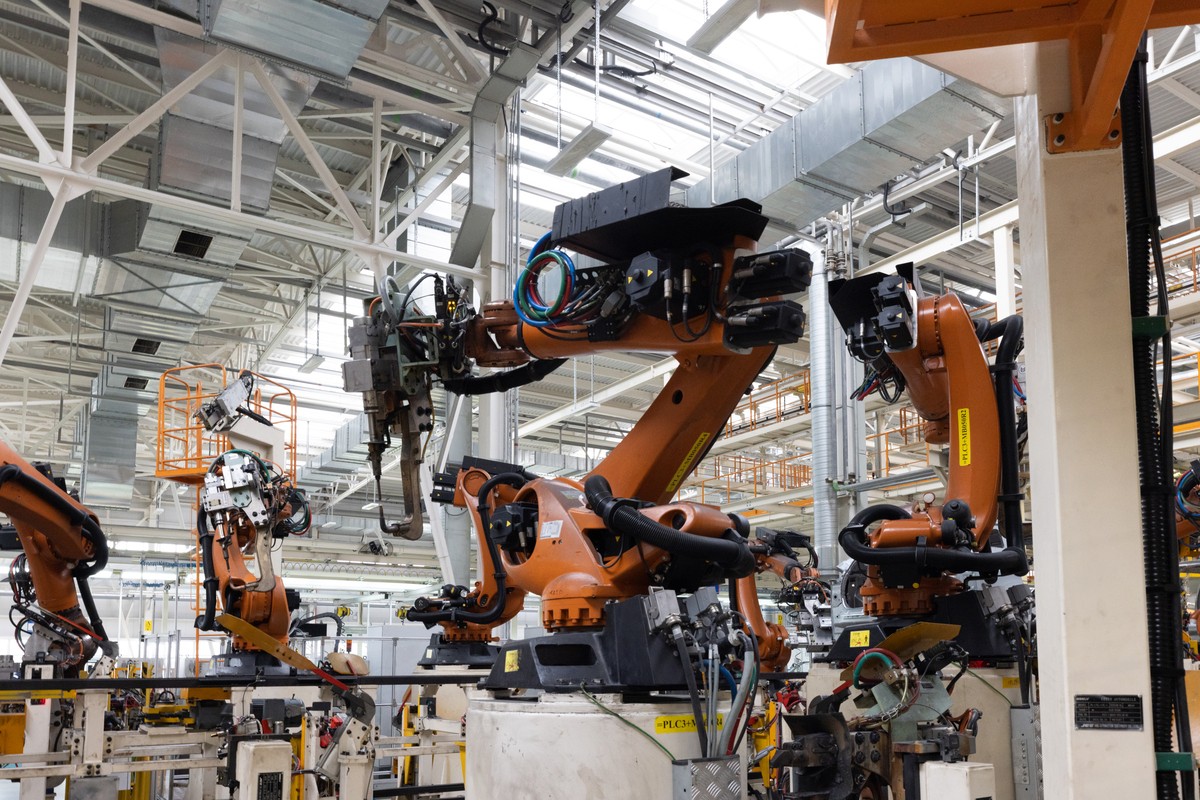
Mobile Technology and Apps
- Field Management Apps: Enabling on-site workers to access plans, schedules, and communicate in real-time, streamlining operations.
- Construction Project Management Software: Centralizing project data, scheduling, and documentation, enhancing collaboration and organization.
Field management apps are transformative tools empowering on-site workers with real-time access to plans, schedules, and communication channels. These apps streamline operations by ensuring everyone is updated instantly, improving coordination and efficiency within futuristic construction projects. With information readily available on handheld devices, decision-making becomes more agile, reducing delays and enhancing productivity on the ground.
Project management software serves as the digital nerve center for futuristic construction projects, consolidating critical data, scheduling, and documentation in one accessible platform. By centralizing information, it facilitates seamless collaboration among team members and stakeholders, fostering better organization and transparency throughout the project lifecycle. This software optimizes workflow management, enabling smoother coordination between different teams, thus contributing to more efficient project execution and delivery.
Benefits of Digital Transformation
- Improved Efficiency: Streamlining processes, reducing errors, and enhancing productivity throughout the project lifecycle.
- Enhanced Collaboration: Facilitating communication and coordination among project stakeholders, leading to smoother workflows.
- Cost and Time Savings: Minimizing rework, optimizing resources, and accelerating project delivery timelines.
Implementing streamlined processes and error-reducing strategies enhances overall productivity across the project lifecycle. By fine-tuning workflows and minimizing bottlenecks, futuristic construction projects operate more smoothly, boosting efficiency at every stage.
By fostering seamless communication and coordination among project stakeholders, futuristic construction projects benefit from improved collaboration. This streamlined collaboration leads to better-informed decisions, smoother workflows, and enhanced overall project outcomes.
Embracing efficient practices minimizes rework, optimizes resource allocation, and expedites project completion. This results in substantial cost savings by reducing unnecessary expenses and time savings through more efficient project delivery timelines. Ultimately, this optimized approach benefits both the project’s bottom line and its overall efficiency.
Future Trends and Innovations
- Artificial Intelligence (AI): Utilizing AI for predictive analytics, decision-making, and project optimization.
- Blockchain Technology: Enhancing transparency and security in project documentation, contracts, and payments.
- Prefabrication and Modularization: Integrating digital technologies with off-site construction for faster assembly and reduced on-site work.
Digital transformation is revolutionizing the futuristic construction industry, enabling greater precision, efficiency, and collaboration while paving the way for further innovations and advancements.
Implications and Future Trends
The implications and future trends of advancements in construction technology are multifaceted, influencing various aspects of the industry and broader society. Here are some key implications and potential future trends:
Implications
Societal Impact
- Urban Development: Futuristic construction methods may redefine cityscapes, introducing smarter and more sustainable urban environments.
- Job Transformation: Automation and robotics could reshape job roles, requiring upskilling and adaptation within the workforce.
- Accessibility and Affordability: Advancements might lead to more affordable housing options and improved infrastructure accessibility.
Futuristic construction methods promise to reshape cityscapes, ushering in smarter, more sustainable urban environments. With innovations like vertical gardening, modular construction, and eco-friendly materials, cities could evolve into greener, more efficient spaces, promoting a harmonious relationship between urban living and the environment.
The integration of automation and robotics in construction is poised to revolutionize job roles, necessitating workforce upskilling and adaptation. While certain traditional roles might diminish, opportunities in tech-related fields and specialized roles in operating and maintaining advanced machinery will emerge, demanding a more tech-savvy and adaptable workforce.
Advancements in futuristic construction methods could pave the way for more affordable housing options and improved infrastructure accessibility. Techniques like 3D printing for housing or innovative modular designs could drive down construction costs, making quality housing more accessible while enhancing infrastructure to cater to diverse needs within communities.
Environmental Considerations
- Sustainability Focus: Greater emphasis on eco-friendly practices, materials, and designs to mitigate the environmental impact of construction.
- Carbon-Neutral Construction: Pursuit of net-zero or carbon-neutral buildings to combat climate change.
Sustainability Focus: The construction industry is pivoting towards eco-friendly practices, materials, and designs, placing a heightened emphasis on reducing environmental impact. By integrating recycled, reclaimed, and bio-based materials, as well as implementing efficient waste management strategies, the sector aims to minimize its carbon footprint and promote a more sustainable future.
Carbon-Neutral Construction: Aiming for net-zero or carbon-neutral buildings is becoming a priority in the fight against climate change. This goal involves balancing the amount of carbon emitted with the amount sequestered or offset, often achieved through energy-efficient designs, renewable energy integration, and innovative construction techniques. The drive for carbon-neutral construction underscores the industry’s commitment to combatting global warming and fostering a greener built environment.
Ethical and Legal Aspects
- Data Privacy and Security: Handling sensitive project data and ensuring cybersecurity in digital construction environments.
- Regulatory Compliance: Evolving regulations to accommodate and regulate new technologies in construction.
In the dynamic landscape of digital construction, safeguarding sensitive project data stands as a paramount concern. Ensuring robust cybersecurity measures becomes pivotal, given the digitization of processes and the influx of data. It involves implementing encryption, access controls, and stringent protocols to protect against breaches and unauthorized access, securing the integrity and confidentiality of critical project information.
With the advent of new technologies in construction, regulatory frameworks must evolve to accommodate these innovations. Adapting regulations to encompass the use of drones, AI, BIM, and other emerging technologies becomes imperative. It involves establishing guidelines that ensure the responsible and safe integration of these advancements, fostering innovation while upholding industry standards and legal compliance.

Future Trends
AI and Machine Learning
- Predictive Analytics: Enhanced project management, risk assessment, and decision-making capabilities.
- Autonomous Construction: Advancements in AI could lead to fully automated construction processes.
Leveraging predictive analytics empowers project managers with improved insights, enabling more informed decisions and proactive risk management. By analyzing historical data and patterns, this technology forecasts potential project outcomes, optimizing resource allocation and mitigating risks before they escalate. Its integration fosters a more efficient and adaptive approach to construction management.
The evolution of AI-driven technologies promises a future where futuristic construction processes are fully automated. Through advancements in robotics and AI, autonomous construction paves the way for increased efficiency, precision, and safety on futuristic construction sites. These innovations enable machines to perform tasks traditionally done by humans, revolutionizing the industry’s productivity and potentially reducing labor-intensive processes.
Sustainability Innovations
- Biophilic Design: Integrating nature and natural elements into building designs for improved well-being.
- Circular Construction Economy: Focus on circularity, reusing materials, and reducing waste throughout the building lifecycle.
This design philosophy seamlessly blends nature into the built environment, fostering a connection with the natural world. By incorporating natural elements like greenery, natural light, water features, and organic shapes into building designs, biophilic design enhances occupants’ well-being, productivity, and overall satisfaction. This approach recognizes the innate human affinity for nature, creating spaces that evoke calmness, reduce stress, and promote a sense of harmony within urban landscapes.
Embracing the principles of circularity, this construction model aims to minimize waste and maximize resource efficiency throughout a building’s lifecycle. It focuses on reducing, reusing, and recycling materials, allowing them to circulate within the economy rather than ending up as waste. By emphasizing sustainable practices like modular construction, deconstruction for material recovery, and using renewable resources, the circular construction economy promotes a more environmentally conscious and resource-efficient building industry.
Smart Construction and IoT
- Smart Cities Integration: Integration of futuristic construction technologies with city infrastructure for efficient, interconnected urban environments.
- Enhanced IoT Sensors: Further development of sensors for real-time data collection and analysis.
The synergy between futuristic construction technologies and urban infrastructure heralds the era of smarter, interconnected cities. This integration optimizes systems, from transportation to utilities, enhancing efficiency and connectivity. By harmonizing futuristic construction innovations with city planning, it paves the way for sustainable, resilient urban environments.
The evolution of IoT sensors represents a leap in real-time data collection and analysis. Continuous advancements refine sensor capabilities, allowing for more granular, diverse data collection across various domains. These sensors not only gather information but also facilitate informed decision-making, enabling smarter, data-driven solutions in futuristic construction, infrastructure management, and beyond.
Advanced Materials and Techniques
- Nanotechnology Integration: Continued exploration of nanomaterials for improved strength, durability, and sustainability.
- Advanced 3D Printing: Refinement of 3D printing for larger and more complex structures.
Ongoing research delves into the integration of nanomaterials, aiming to enhance futuristic construction elements’ strength, durability, and sustainability. Nanotechnology’s microscopic scale allows for innovative materials that promise remarkable resilience and eco-friendliness, potentially transforming the industry’s standards for building materials.
Evolution in 3D printing techniques is revolutionizing construction, facilitating the creation of larger and intricately designed structures. Continuous refinement in this technology enables the printing of complex architectural designs with greater speed and precision, unlocking new possibilities for efficient and customized futuristic construction projects.
Challenges and Considerations
- Technological Integration: Overcoming challenges in integrating various technologies seamlessly within futuristic construction processes.
- Ethical Dilemmas: Addressing ethical concerns regarding job displacement, data privacy, and environmental impacts.
The future of construction appears to be guided by a commitment to sustainability, technological innovation, and the transformation of urban landscapes. However, it will also involve navigating challenges and ethical considerations to ensure that these advancements benefit society while minimizing negative repercussions.
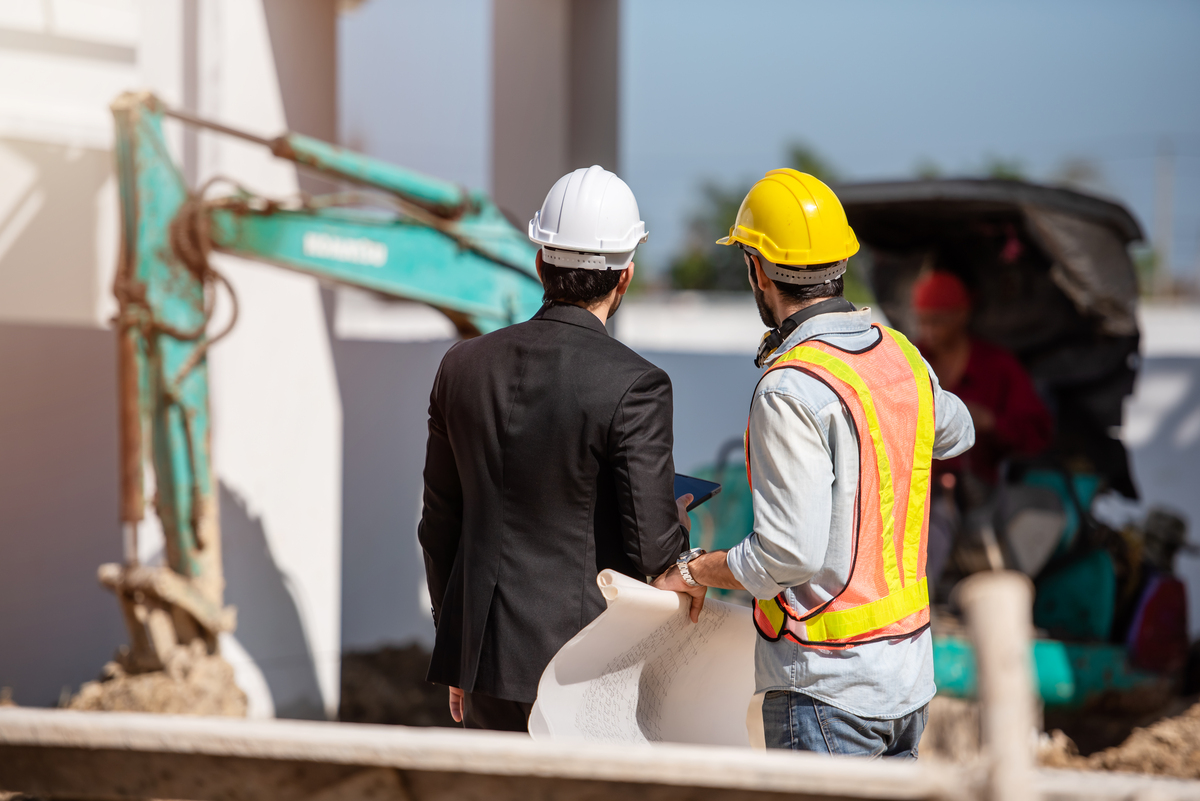
Conclusion
In conclusion, the current landscape of construction is at the crossroads of tradition and innovation, where age-old techniques coexist with cutting-edge technologies. Traditional methods, rooted in craftsmanship and skill, lay the foundation for an industry that is rapidly embracing digital transformation and sustainable practices.
While technology has ushered in new possibilities, the construction sector faces its share of challenges. Labor shortages, cost overruns, and the delicate balance between rapid construction and sustainability underscore the need for a holistic approach to industry evolution. Stringent regulatory frameworks serve as both a safeguard and a catalyst for change, shaping construction practices in line with safety, quality, and environmental standards.
The emergence of futuristic construction technologies brings promise and anticipation for a transformative phase. From advanced materials and robotics to sustainable practices and digitalization, the industry is on the brink of a paradigm shift. This shift promises to revolutionize construction methodologies, making processes more efficient, cost-effective, and environmentally friendly.
In parallel, emerging technologies are driving innovation in futuristic construction. Advanced materials like self-healing concrete and nanotechnology, coupled with the integration of robotics and 3D printing, are reshaping the way structures are built. Sustainability and green construction practices, including the use of eco-friendly materials and renewable energy sources, underscore a commitment to environmental responsibility.
As the construction industry undergoes digital transformation, the integration of technologies like BIM, IoT, and augmented reality is enhancing collaboration, efficiency, and safety. The benefits of this transformation include improved productivity, enhanced collaboration, and cost and time savings.
Looking ahead, the implications of these advancements in futuristic construction are broad and impactful. From reshaping urban landscapes to transforming job roles and emphasizing affordability and accessibility, the societal impact is profound. Environmental considerations drive a focus on sustainability and the pursuit of carbon-neutral construction. Ethical and legal aspects, such as data privacy and regulatory compliance, must be addressed to ensure responsible technological integration.
The future trends in futuristic construction are marked by AI-driven predictive analytics, sustainable innovations like biophilic design, and the integration of smart construction practices with IoT. Challenges such as technological integration and ethical dilemmas will need to be navigated to ensure that the industry’s transformation aligns with the broader goals of societal benefit.
FAQs
What is Futuristic Construction?
- Answer: Advanced technology such as robotics, artificial intelligence, 3D printing, and sustainable materials are used in futuristic construction to transform conventional building methods and achieve higher efficiency and environmental effect.
How does AI Impact Futuristic Construction?
- Answer: By identifying possible hazards, automating activities, and optimizing designs, artificial intelligence (AI) improves construction and makes it safer and more effective.
What Role does 3D Printing Play in Futuristic Construction?
- Answer: Complex structures may be quickly produced with 3D printing, which lowers expenses and waste while promoting more imaginative design.
What are the Sustainability Benefits of Futuristic Construction
- Answer: In order to lessen a building’s environmental impact, futuristic construction uses renewable energy sources and eco-friendly materials.
How does Robotics Transform Construction Sites?
- Answer: By automating repetitive jobs like welding and bricklaying, robotics increases productivity and safety while lowering labor costs and human error.
Suggested article for reading:
Reduce Carbon Emission in Construction; Ultimate Guide in 2024
IIoT Technology: Top 7 Sustainable Practices It Enables
Case Study: Top 4 Eco-Friendly Smart Building Construction Projects
What is Eco Friendly Construction & Why is it important? 2024 Guide
Sustainable Construction Technology; Ultimate Guide in 2024
Resources:
ProEst | Letsbuild | Imaginovation | Device Magic | BigRentz | Trimble View Point | DOZR
For all the pictures: Freepik

